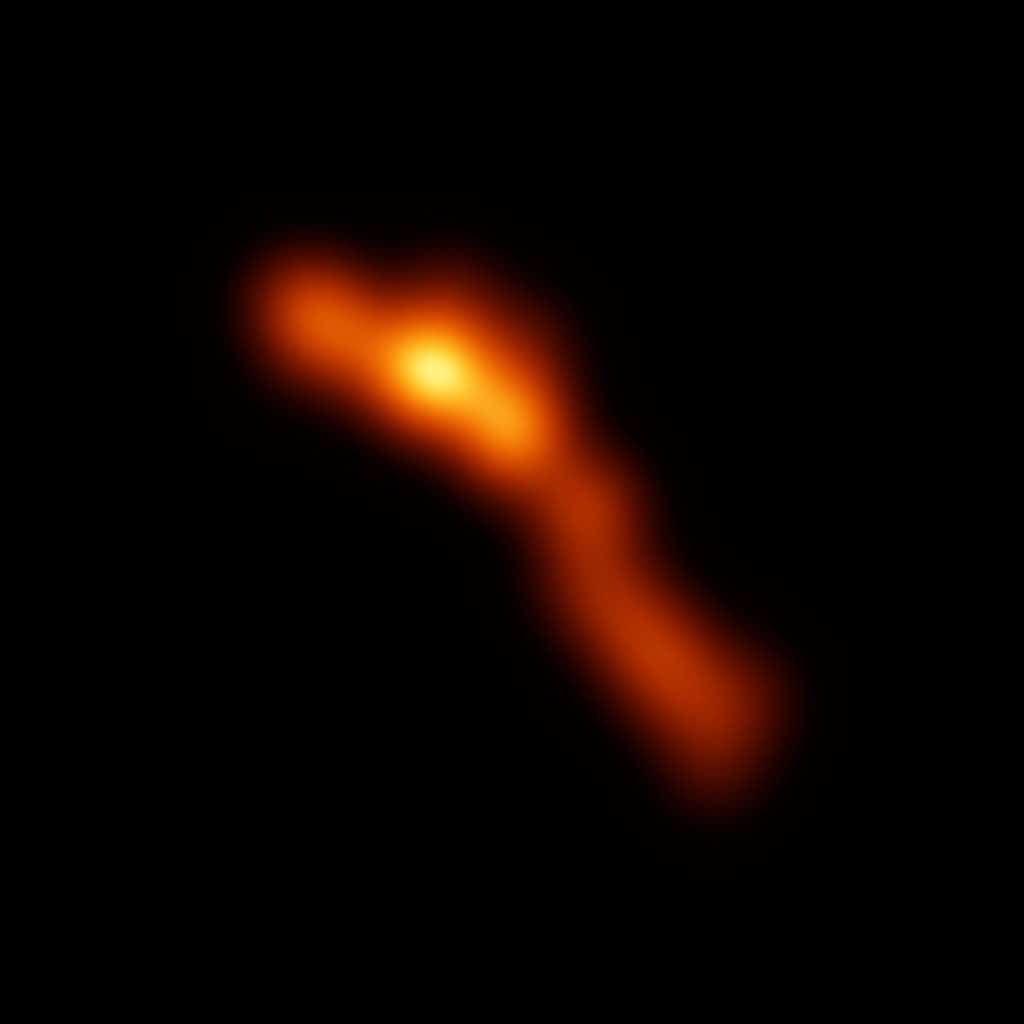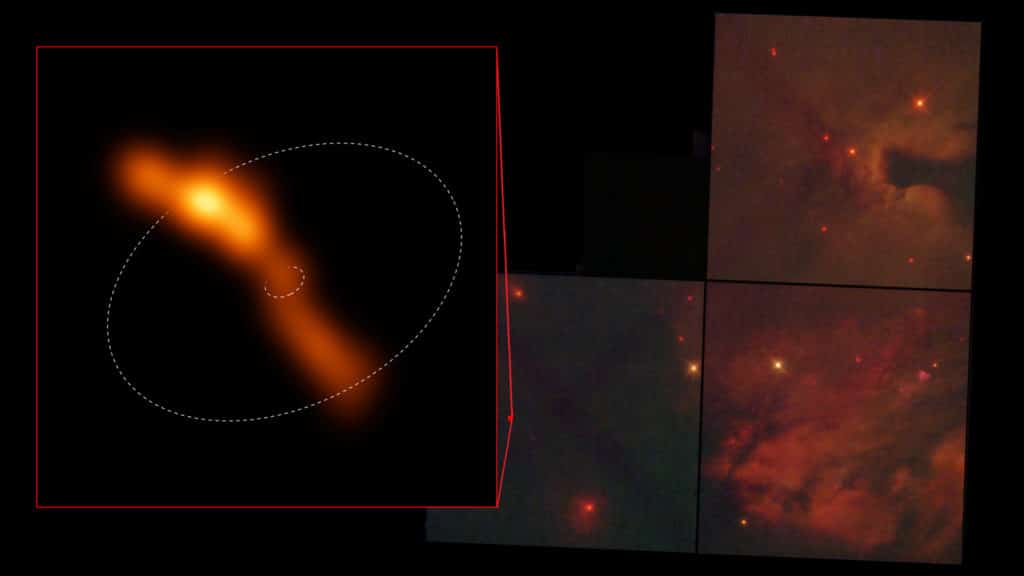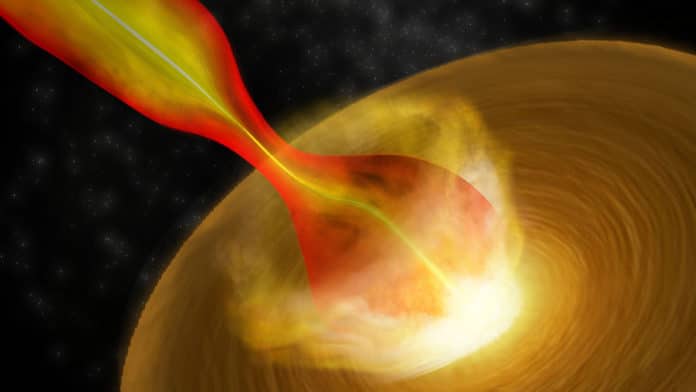Both low-and high-mass young stars, or protostars, emits towards a disk of material intently orbiting the star. These jets are narrowed and focused, especially in stars with a mass similar to the Sun. They are incredibly close to the star in a process called collimation.
As the high-mass protostars are more distant, it is quite challenging for scientists to study the regions close to them. That’s the reason astronomers don’t have any clear clue if this was the case with them.
Recently, scientists used the U.S. National Science Foundation’s Karl G. Jansky Very Large Array (VLA) to study fast-moving jets. They found that the jets emitted by a massive young star is very different than those ejected by less-massive young stars.
Scientists observed a massive protostar called Cep A HW2, located about 2,300 light-years from Earth in the constellation Cepheus. Cep A HW2 is required to form into another star around multiple times more enormous than the Sun.

The new VLA images showed the finest detail yet seen in such an object, giving the astronomers their first view of the innermost portion of the jet, a portion roughly as long as the diameter of the Solar System.
Adriana Rodriguez-Kamenetzky, of the National Autonomous University of Mexico (UNAM), said, “What we saw is very different from what usually is seen in the jets from low-mass stars.”
“In lower-mass protostars, observations have shown the jets to be collimated as close to the star as only a few times the Earth-Sun distance.”
Alberto Sanna of the Osservatorio Astronomico di Cagliari (INAF) in Italy said, “In Cep A HW2, however, We see not a single jet, but two things — a wide-angle wind originating close to the star, then a highly-collimated jet some distance away. The collimated jet starts at a distance from the star comparable to the distance from the Sun to Uranus or Neptune.”

Here two main possibilities arise:
In the first place, an exact mechanism might be activated in both high-mass and low-mass protostars. Yet, the collimation distance could be determined by the mass, happening farther away in more-gigantic frameworks. The subsequent possibility is that high-mass stars may deliver just the wide-angle wind seen in Cep A HW2, with collimation possibly coming when physical conditions around the star limit the flow.
Carlos Carrasco-Gonzalez, also of UNAM, leader of the work, said, “That case would point to a major difference in the mechanisms at work in protostars of different masses. Answering this question is important to understanding how stars of all masses form.”
Journal Reference:
- Carlos Carrasco-González et al. Zooming into the Collimation Zone in a Massive Protostellar Jet. arXiv:2106.01235
